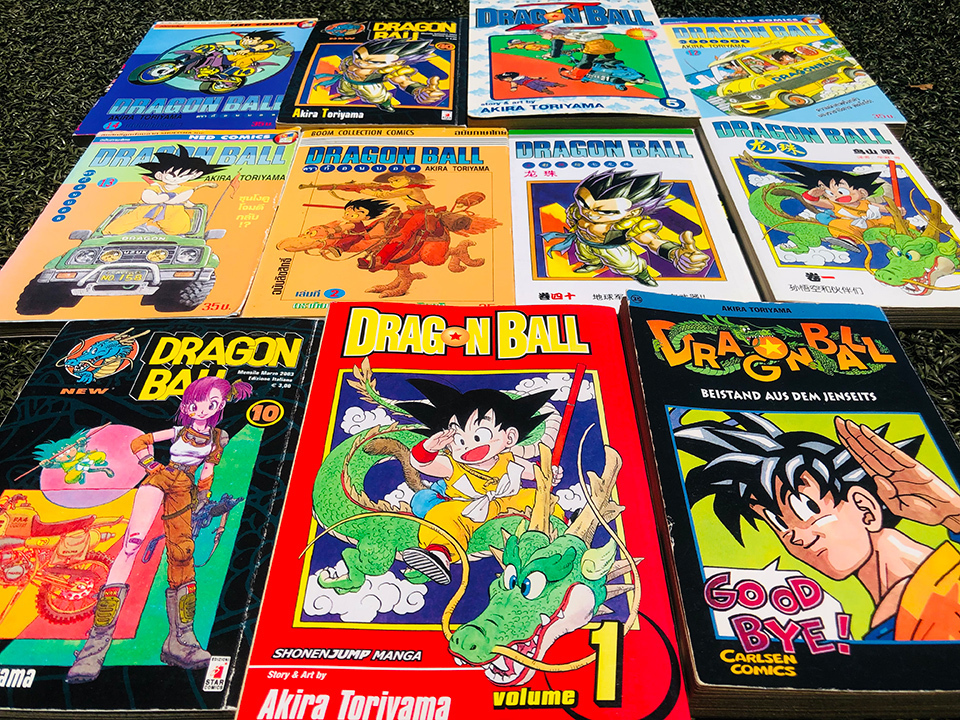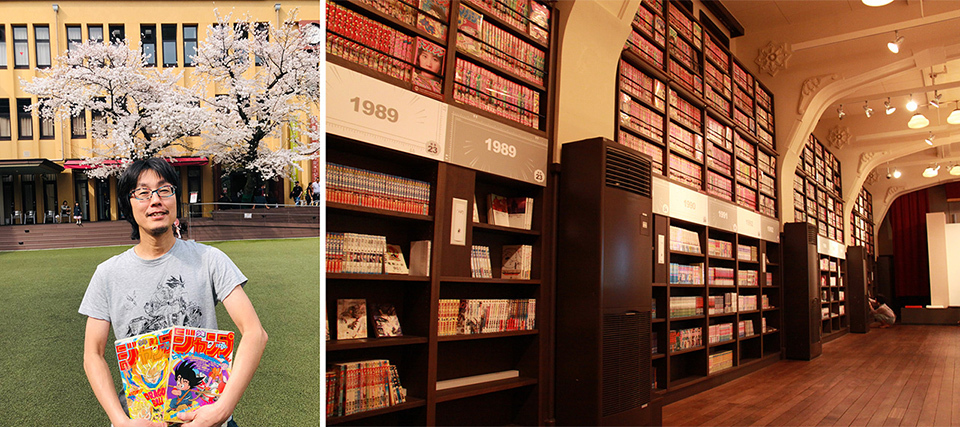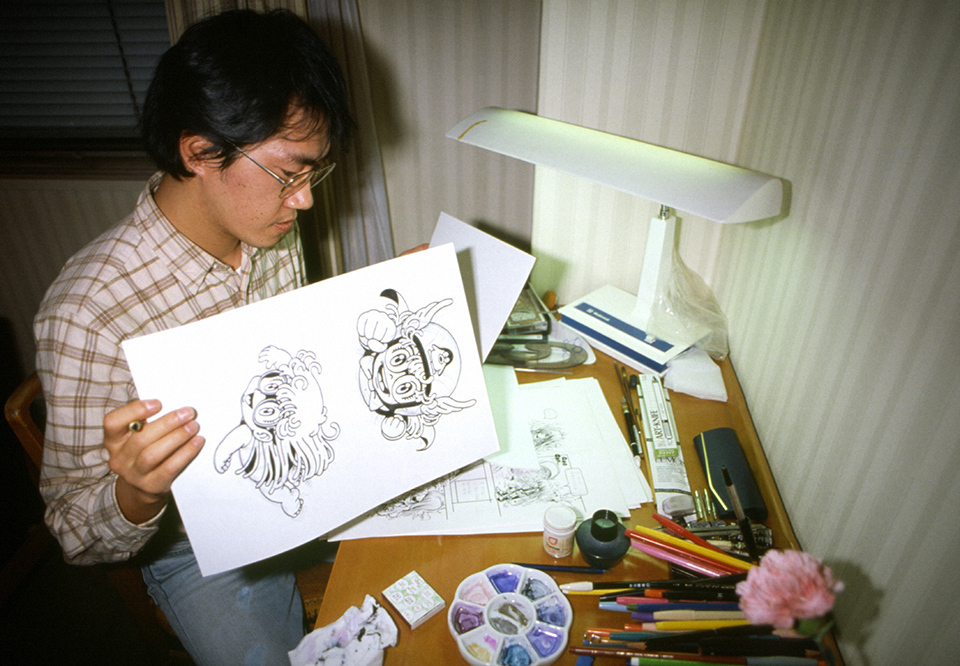TORIYAMA Akira, the influential manga artist known for the celebrated Dragon Ball series, died on March 1, 2024. What did he achieve during his life, and what hidden potential lies in Japanese manga culture, which was made into a global phenomenon by his works?

Translated into 25 languages, the Dragon Ball series became a worldwide hit. ITO Yu’s private collection.
Dragon Ball, one of Japan’s most iconic manga and anime series, is an adventure story about the quest for the magical Dragon Balls, seven orbs which summon a wish-granting dragon when all are collected. News of the recent death of author TORIYAMA Akira spread internationally, and tributes received from all corners of the world testify to the global popularity of the man and his work.
The worldwide success of the Dragon Ball anime series, which began broadcasting in the late 1980s, marked the beginning of the Japanese anime and manga boom. Dragon Ball’s simple yet profound storyline and dynamic battle scenes, studded with humor, enraptured readers and viewers. Backed by his superb artistic skill, Toriyama’s works have electrified fans with their distinctively deformed character designs and worlds that inspired many imitators. “While his work was a form of entertainment all could enjoy, I think its wide acclaim owed a lot to his artistic talent for crafting such high-quality works,” says ITO Yu, specially appointed associate professor at the Kyoto Seika University International Manga Research Center.
“In general, dialogue in Japanese manga is written vertically and the books are bound on the right side. In the past, when translated versions were published, the pages were mirrored to let people read the dialogue horizontally, from left to right [as in Western languages]. When the complete Dragon Ball series was translated and published, however, Toriyama requested that all his books be right-bound, which is said to be why that has become the global standard for manga. So, in many ways, the Dragon Ball series was a turning point,” explains Ito.

Left: Ito Yu has curated numerous manga exhibitions, primarily at the Kyoto International Manga Museum. Above, he holds editions from the Manga Museum collection of the Weekly Shonen Jump magazine, in which Dragon Ball was carried.
Right: The Kyoto International Manga Museum houses 300,000 manga items in its collection, displaying 50,000 volumes across the total 200-meter length of its Wall of Manga. PHOTO COURTESY OF THE KYOTO INTERNATIONAL MANGA MUSEUM
Japanese manga are now widely read around the world, thanks in part to the Dragon Ball series, and the nature of the industry itself is having a global impact. “In 2020, we produced a Shojo Manga exhibition in India. One of the distinct features of Japanese manga is that many of the authors and readers are women. The very structure of Japan’s manga culture, where we see a popular culture created by women for women, might bring hope to people in parts of the world where women’s rights are lacking,” says Ito.
Some people say that the spread of Japanese manga has created a borderless world, but Ito views it in a slightly different way: “It is not so much that the borders themselves have disappeared, but rather that the culture has transcended them. Changes may be made to certain manga depending on the country; for instance, age-related restrictions might be imposed, or extra clothing added to hide female skin. Those are not necessarily terrible things; instead, knowing the differences should be a good starting point for understanding different cultures.”
Much like the eponymous Dragon Ball orbs, scattered across the world, Toriyama Akira’s works have reached all corners of the earth. What exactly happens when we communicate with people around the world through these works? Surely, it is a mutual understanding that goes beyond national and cultural borders.

The late manga artist TORIYAMA Akira shown drawing sketches for Dr. Slump. At the time this photo was taken in November 1981, the story was being serialized in the manga magazine Weekly Shonen Jump. THE MAINICHI SHIMBUN/AFLO






























